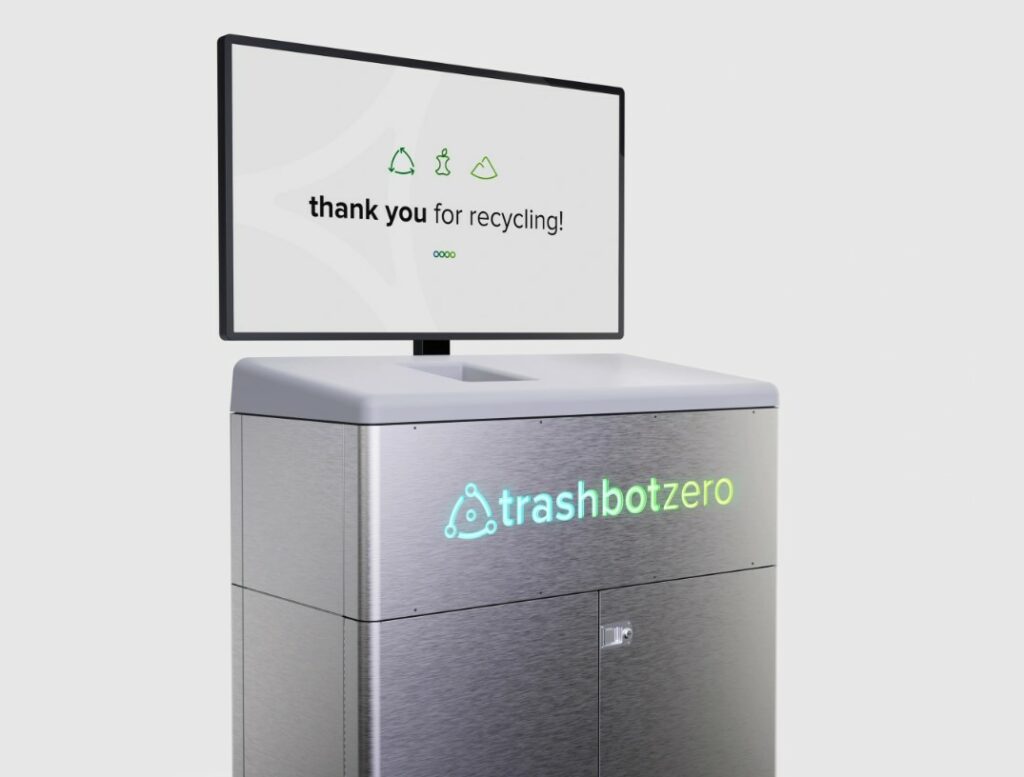
8-16 #VIP : Samsung heir Lee Jae-yong is pardoned; The US Chips Act is being signed by President Joe Biden; The US is ready to block the export to China of EDA software; etc.

Antonio Varas, chief strategy officer of Synopsys, has said that TSMC produces 90% of the world’s advanced process chips below 10nm. If Taiwanese chips cannot be exported due to the conflict in the Taiwan Strait, factories around the world may be forced to shut down for 3 weeks to 3 months depending on the chip inventory. Antonio Varas has said that it takes several years for a fab to go from planning to mass production, and the semiconductor industry usually forms close cooperation with upstream and downstream manufacturers in the form of industrial clusters. In theory, semiconductor factories can be located all over the world, but in practice they can only be located in areas with low-cost water and electricity, close to airports, and manufacturers willing to be subsidized. (Laoyaoba, Elpais)
Samsung heir Lee Jae-yong — known in the West as Jay Y. Lee — has won a presidential pardon by South Korean President Yoon Suk-yeol, allowing the grandson of Samsung’s founder to resume leadership of the powerful conglomerate. (Laoyaoba, RFI, WSJ, Bloomberg, Washington Post, Reuters, The Verge)
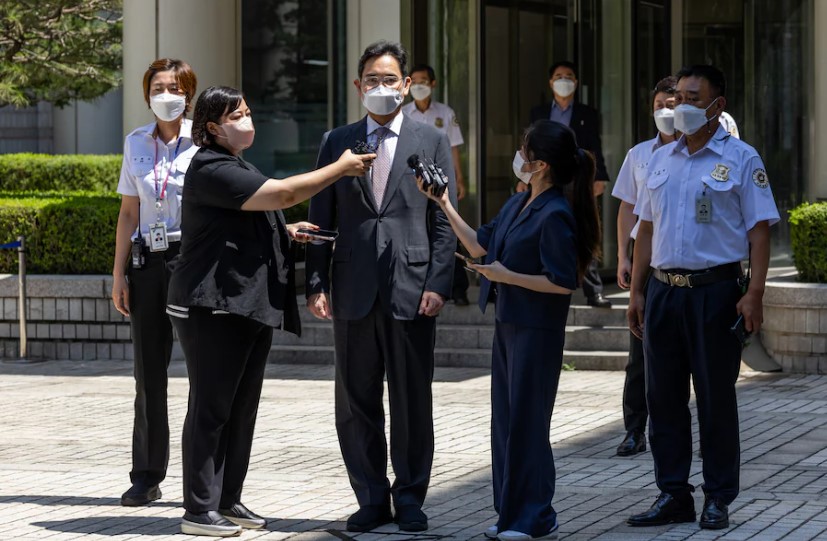
Bosch has partnered with Multiverse Computing, a Spanish quantum software platform, to integrate quantum algorithms into digital twin simulation workflows. Bosch already has an extensive industrial simulation practice that provides insights across various business units. This new collaboration will explore ways quantum-inspired algorithms and computers could help scale these simulations more efficiently. Bosch is exploring quantum computing and simulation as part of its broader Industry 4.0 efforts focused on increasing data collection, analytics and simulation across its 240 plants. These efforts have connected 120,000 machines used in manufacturing and over 250,000 devices into new digital twin workflows. (VentureBeat, HPC Wire, Quantum Computing, Digitimes)
The US is ready to block the export to China of electronic design automation (EDA) software needed for an emerging technology called gate-all-around (GAA). The Bureau of Industry and Security (BIS) has announced new export controls on four technologies that can be used to produce advanced semiconductors and gas turbine engines. The controls, which were agreed to by members of the multilateral Wassenaar Arrangement at 2021’s plenary, will apply to two substrates of ultra-wide bandgap semiconductors, certain Electronic Computer Aided Design (ECAD) software and certain pressure gain combustion (PGC) technology. (163, Guancha, Electronics Weekly, Protocol, Yahoo, Export Compliance Daily)

The US Chips Act is being signed by President Joe Biden into law to fund the US semiconductor (semis) production, R&D and science programmes. Key terms: (1) USD39B for semis manufacturing incentives, including USD2B on mature nodes and up to USD3B per project; (2) USD11B for R&D funding, including a National Semi Technology Center, and USD4.2B for industry development for telecom, defense and workforce training; and (3) 25% investment tax credit for semis fab construction, fab equipment, and semi-cap investment. The US CBO estimates USD25B / USD22B for grants / tax credits over 2022-2026. (Credit Suisse report)
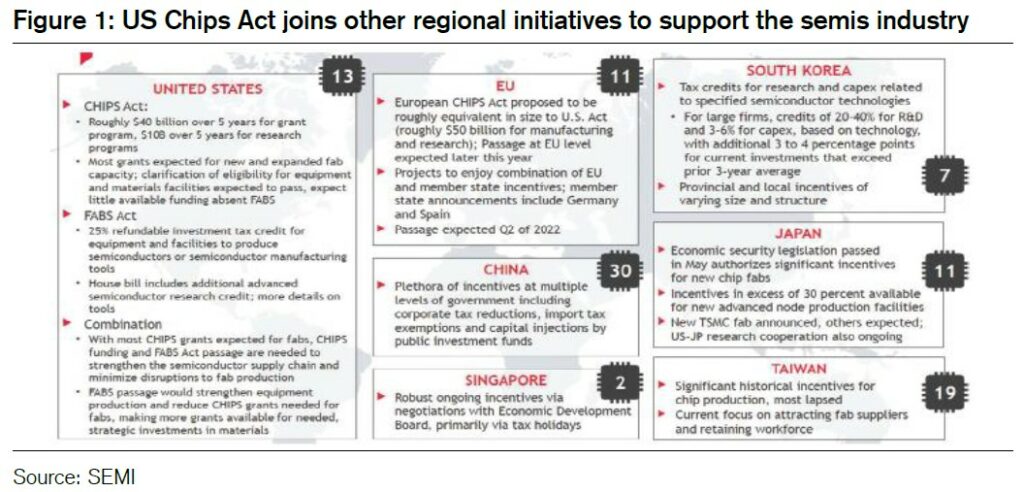
Credit Suisse views TSMC, Samsung, and other Asian foundries facing more rival subsidized capacity to chase business that may otherwise not have been economical. While Samsung / TSMC US projects should receive grants if they restrict China expansion, the act shifts some capex to lessefficient geographically dispersed fabs away from their R&D centres, while providing less benefit relative to their footprint vs Intel / GlobalFoundries. Fabless also are left out of direct subsidies and face same over-supply risk albeit more capacity options. China also faces a new development hurdle with the US restricting grants to recipients investing in logic in China below 28nm for 10 years. (Credit Suisse report)
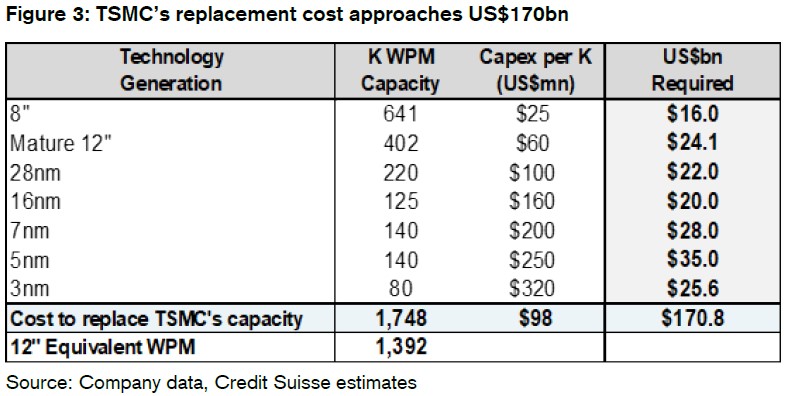

According to iResearch’s data, horizontally folded mobile phones have a strong impact on the user’s senses. Therefore, the sense of technology and high-end are the main factors that potential purchasers pay attention to. At the same time, potential purchasers are also more concerned about the experience of using large screens and hardware. Configuration, brand reputation and shape design; different from horizontally foldable mobile phones, the portability of vertically folded mobile phones has become the primary factor to attract potential purchasers. Although potential purchasers also emphasize the sense of technology, fashion and high-end. (Guosen Securities report)
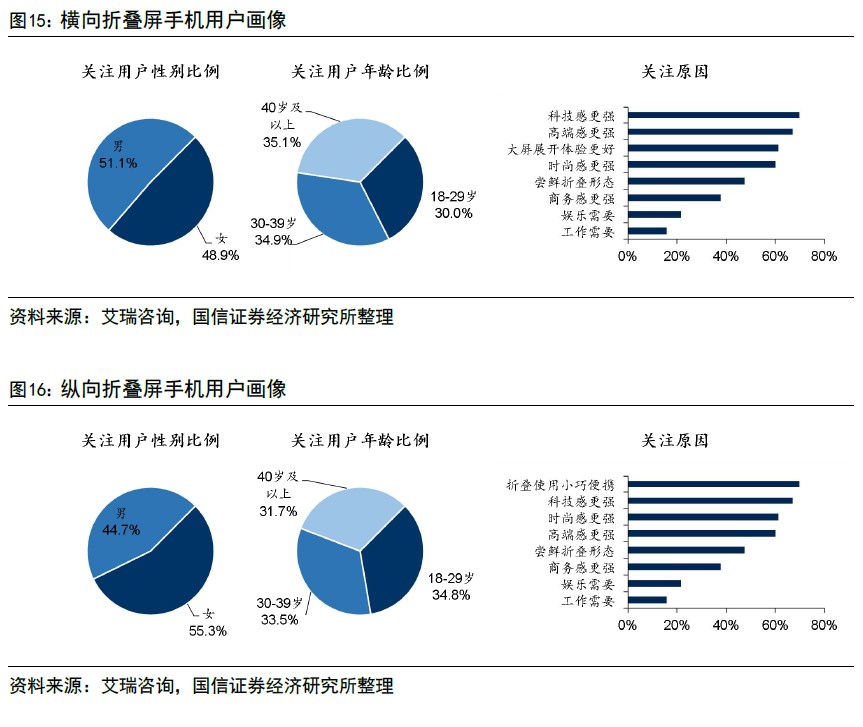
According to DSCC data, the global shipment of folding screen mobile phones in 2020 will be 2.25M units, a YoY increase of 980%; in 2021, the global foldable phone shipments are 7.98M units, a YoY increase of 254%. DSCC expects global shipments of foldable phones to increase by 123% YoY to 17.77M units in 2022, and expects global foldable phones shipments to reach 54.68M units in 2026 (CAGR 47% in 2021-2026). In a single quarter, according to DSCC data, the global shipments of foldable phones in 4Q21 reached 4.2451M units (QoQ 64.51%, YoY 519.57%), a record high in a single quarter; in 1Q21, global foldable phone shipments reached 2.222M units ( YoY 570.58%), continuing the high growth trend YoY. (Guosen Securities report)
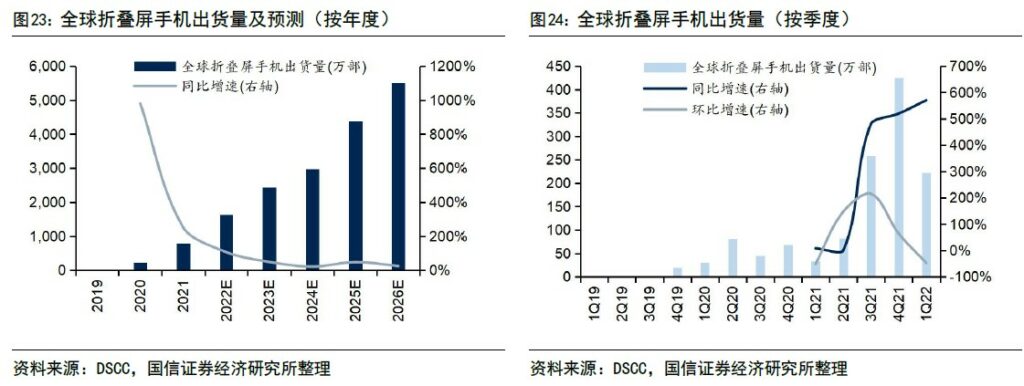
Compared with traditional smartphones, the changes in the foldable phone industry chain are mainly reflected in upstream OLED panels, covers, hinges, etc. Guosen Securities believes that the foldable phone is an important innovative branch of the smart phone industry chain. The difference between the traditional smart phone industry chain and the foldable phone industry chain is mainly reflected in the supply of upstream OLED panels, covers, hinges and other components. (Guosen Securities report)
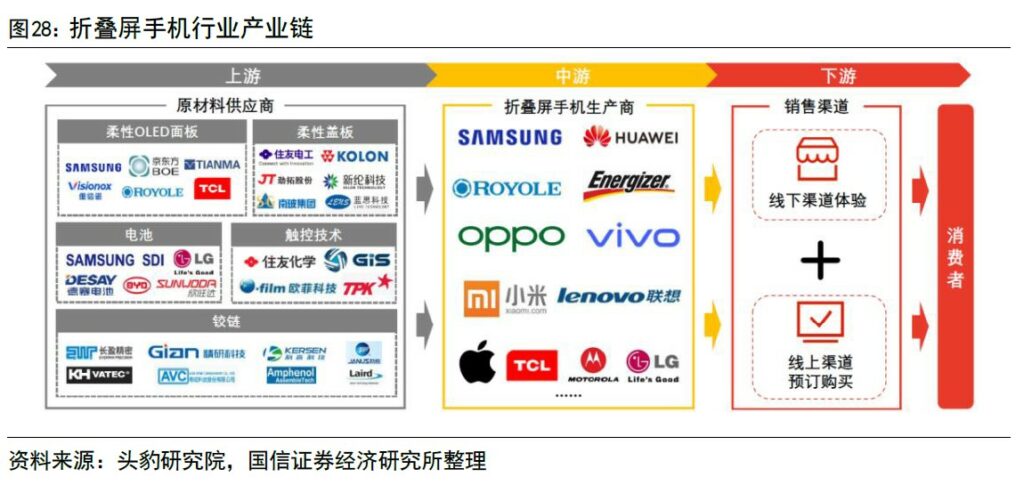
According to Guosen Securities, the current foldable display hinge assembly suppliers include South Korea’s KH Vatec, S-Connect, AU Flex, China’s Jingyan Technology, Kesen Technology, Changying Precision, Zhaoli, Fustya, etc. The suppliers of folding screen hinge MIM parts mainly include China’s Jingyan Technology, Dongmu., Xinwei Communication, Xinrixing, etc.; the suppliers of hinge aluminum alloy materials mainly include China’s Furong Technology, etc.; the supply of hinge liquid metal businesses mainly include China’s Yi’an Technology, Changzhou Shijing, etc. (Guosen Securities report)
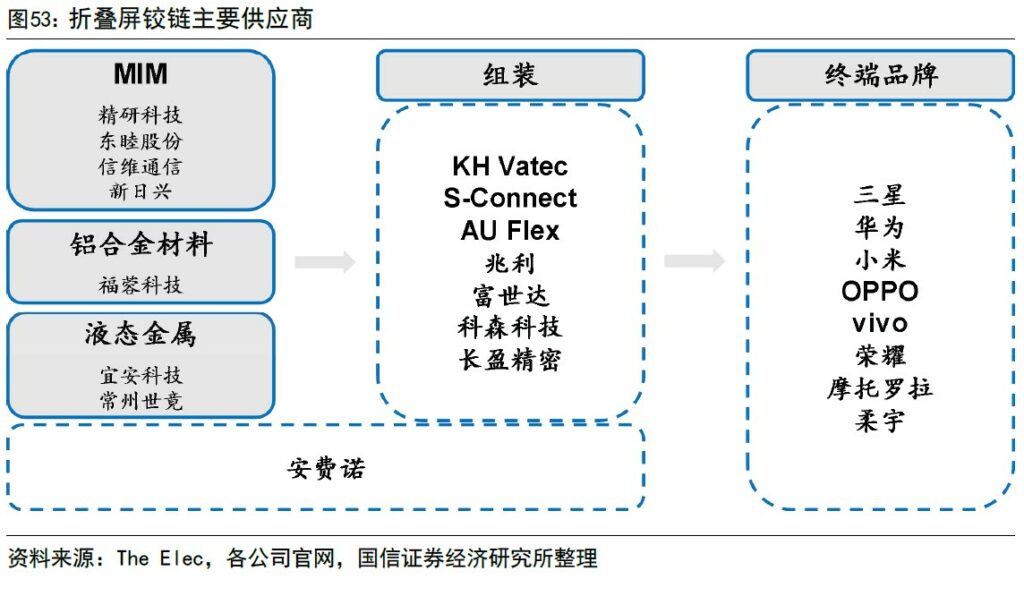
Guosen Securities estimates that the global UTG cover market for foldable phones in 2021 will be CNY1.278B, a YoY increase of 242.0%; they predict that the market size in 2022 is expected to increase by 88.3% YoY to CNY2.407B, and the market size is expected to grow to CNY4.998B in 2026. Yuan (CAGR: 31.3%). (Guosen Securities report)

Guosen Securities estimates that the global foldable phone hinge market in 2021 will be CNY1.267B, and it is expected to increase by 136.8% YoY to CNY2.999B in 2022 and CNY18.754B in 2026 (CAGR: 71.4%). They estimate that the global foldable phone hinge MIM market size in 2021 will be CNY317M, which is expected to increase by 152.9% YoY to CNY802M in 2022 and CNY6.165B in 2026 (CAGR: 81.0%). (Guosen Securities report)
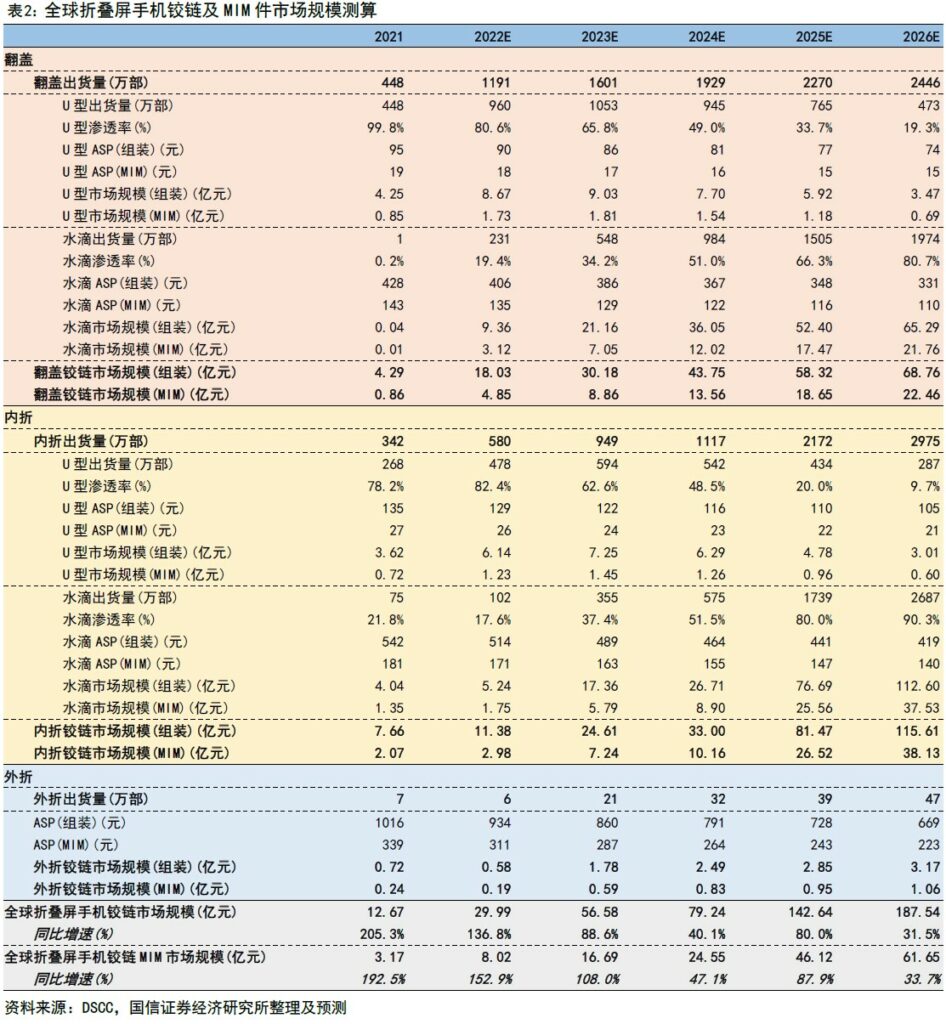

According to Digitimes, Samsung has cut its 4Gb DDR4 chip prices, according to industry sources, which believe it is the company’s strategic move further to accelerate the industry’s transition from DDR3 to DDR4. Samsung continues to scale back its DDR3 chip production while offering more cost-effective DDR4 chip prices to attract orders for applications that still require DDR3 memory, such as consumer electronics. As Samsung cuts DDR4 chip prices, DDR3 memory suppliers may also lower their offers to maintain orders. The decline in consumer DRAM prices is expected to widen in 2H22. In Jul 2022 alone, contract prices for 4Gb DDR4 memory have fallen by about 8%, although the price cuts by major suppliers are “unreasonable” from a manufacturing cost perspective. And 3Q22 consumer DRAM prices may drop 15%. (Digitimes, Digitimes, CN Beta, Laoyaoba)
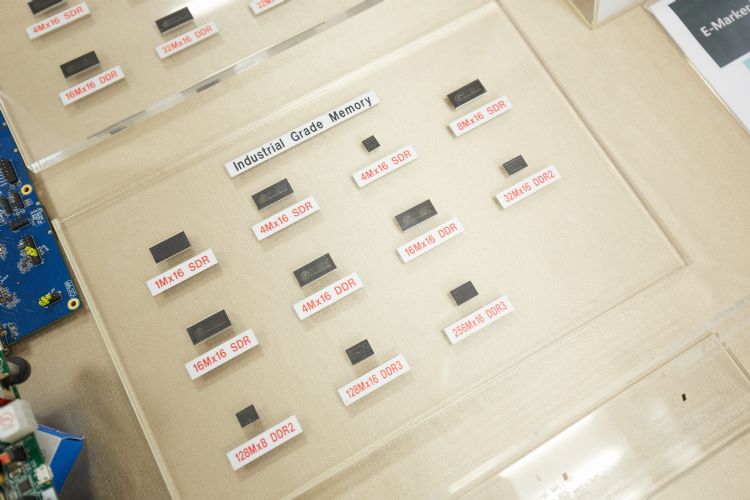
According to TrendForce investigations, 2Q22 DRAM industry revenue reached USD25.59B, growing 6.5% QoQ. The primary reason for 2Q22 revenue growth stemmed from an increase in bit shipments from certain DRAM suppliers. Although PC and mobile DRAM were hit hard by inflation and weak demand, momentum in the server DRAM market remained strong in 1H22, driving quarterly shipment growth at the three top manufacturers to 5~10%. In terms of revenue, the top manufacturers consisting of Samsung, SK Hynix, and Micron, all saw revenue growth with the two Korean companies accounting for a combined market share of 70.9%. (TrendForce, TrendForce, Laoyaoba)
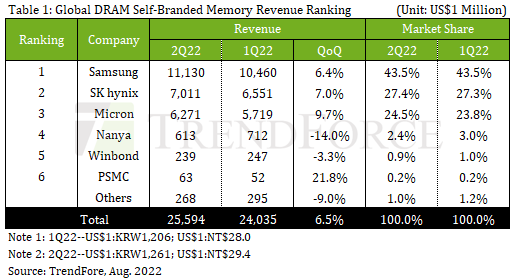

An innovation called the Pneumo.Vest that has recently been developed at the Fraunhofer Institute may lead to changes in the way that lung function is monitored in the future. They have developed a vest with integrated sensors that can continually monitor the lungs without the need for expensive equipment, trained professionals to operate it, or an inpatient setting. An individual being monitored only needs to put on the vest, then they can go about their normal, daily activities. Such a paradigm shift has the potential to reduce the burden on both patients and the healthcare system. Pneumo.Vest has an array of piezoceramic acoustic sensors integrated into the front and back of its fabric that are capable of detecting even very faint sounds. Since the position of each sensor is fixed relative to one another, it is possible to pinpoint exactly where sounds are detected in the lungs. This allows for a detailed map of areas of concern to be generated, and that map can be built up over time, giving clinicians a picture of the status of the lungs over a period of time. (CN Beta, Hackster.io, Fraunhofer, Notebook Check)

Mawi launches a patch to track heart health faster in real time. The company describes the Mawi Heart Patch as “a stick-and-go, wireless solution” and further suggests that the disposable nature of the device is a benefit; it means that cardiologists can run tests on as many patients as they need to without having to wait for reusable Holter monitors to come back from other patients and get sanitized and maintained between uses. The company claims that the patch can be applied in under a minute and the wearer can live like normal as she wears it. The patch connects to a smartphone device in the doctor’s office. That device pipes the data through to the cloud, where an AI analyzes the results and highlights anything unusual for the cardiologists to take a closer look at.(TechCrunch, Bioworld)

According to research published by the Texas Heart Institute Journal, the Apple Watch could help identify heart attacks through the electrocardiogram (ECG) sensors the watches already comprise. Heart attacks or myocardial infarctions (MI) have become increasingly common in the U.S., with someone experiencing it almost every 40 seconds. Apple states that the device is unsuitable for detecting MI, as it only provides single-lead information, whereas professional diagnosis requires a 12-lead ECG. The research shows the potential of Apple Watches, specifically Series 4, 5, 6, and 7 models as they possess the ECG sensors, to provide multiple leads for an MI diagnosis. It explains that leads I, II, and III are essential in the traditional method of ECG diagnosis. Since Apple uses lead I, it only requires the other two, which can be obtained using different body parts. (Neowin, Texas Heart Institute Journal, MacRumors)
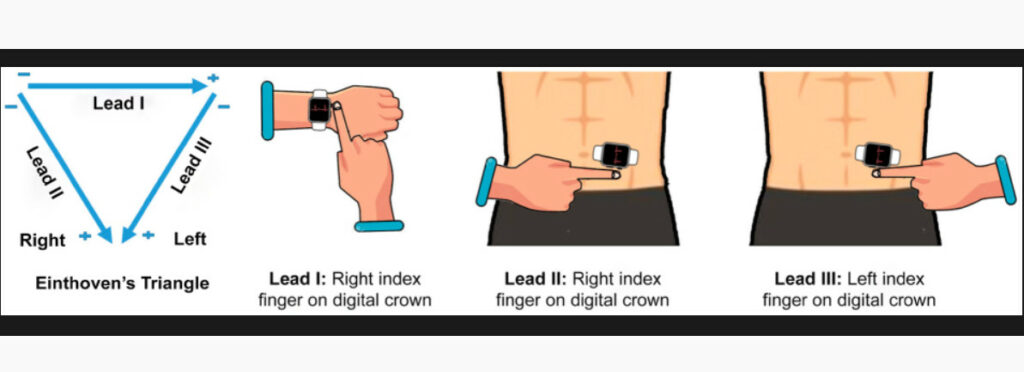

According to SNE Research data, 15 of the top 20 global power battery installed capacity companies in 1H22 are Chinese companies; among the 12 power battery companies with a growth rate of more than 100%, 11 are Chinese companies. As of the end of 2021, China’s new energy vehicle production has ranked first in the world for 7 consecutive years. According to the data of China Passenger Transport Association, in 1H22, China’s new energy passenger vehicle market accounted for 59% of the world’s new energy vehicles. According to SNE Research data, CATL ranks third in overseas markets with an installed capacity of 16.2GWh, with a market share of 18%. Envision Power, Sunwoda, and BYD are ranked 6th, 8th and 10th respectively. Especially for Sunwoda, the installed capacity in overseas markets increased from 0.1GWh in the first half of last year to 0.6GWh, a very rapid growth. (CN Beta, WallStreet CN, Wave)
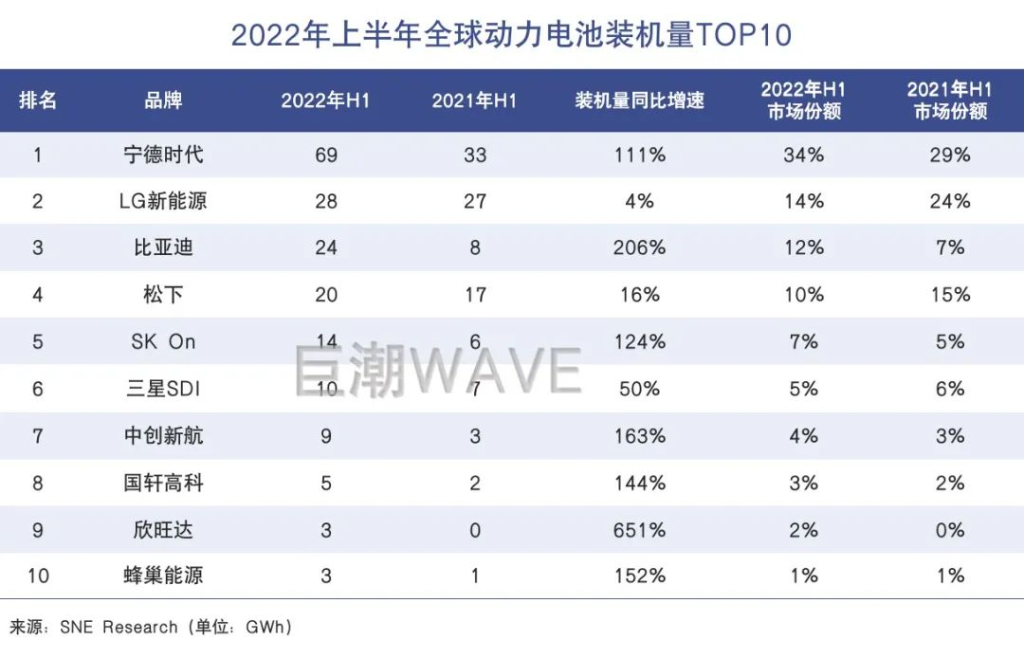
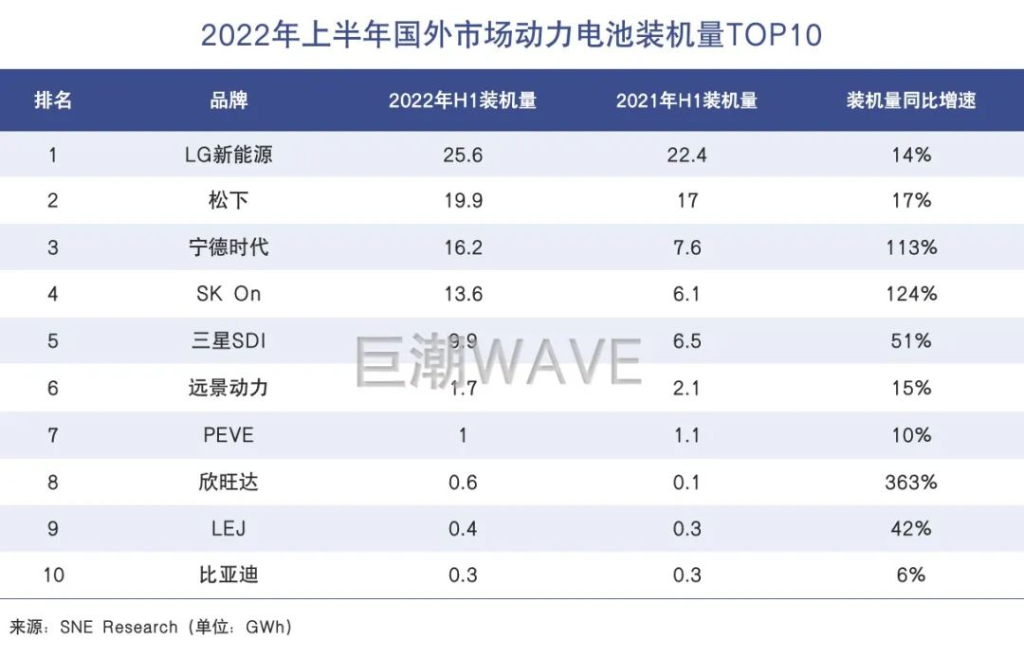
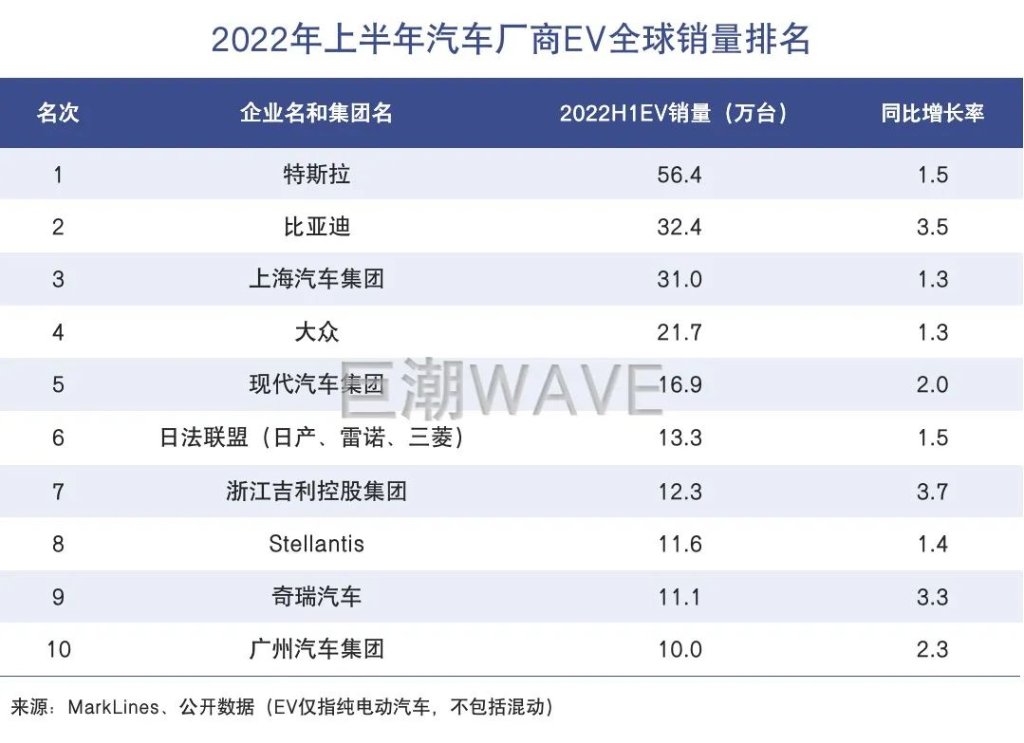

YouTube is reportedly “planning to launch an online store for streaming video services and has renewed talks with entertainment companies about participating in the platform”. YouTube’s pitch is that the new YouTube channel store would offer great marketing for streaming services because consumers could watch trailers of shows or movies free on YouTube and then easily pay to subscribe to the service. YouTube is discussing splitting subscription revenue with streaming partners, although the terms may vary widely for each partner. (CN Beta, 9to5Google, Android Authority, WSJ)

Apple is set to expand ads to new areas of your iPhone and iPad in search of its next big revenue driver, according to Bloomberg’s Mark Gurman. Apple’s advertising efforts today consist of display ads inside of its News and Stocks apps, as well as inside the App Store, across the iPhone, iPad and Mac. The App Store also has Google-like search ads. The company is projected to bring ads to more of the apps that come pre-installed on the iPhone and other Apple devices, including Maps, Books, and Podcasts. Gurman claims that Apple has already tested incorporating sponsored results to search results in the Maps app. Apple ads revenue currently comes from the App Store Search Ads, ads in Apple News, and a few more sources. The company’s total ad revenue is USD4B and it is reportedly aiming to triple its ad revenue to double-digit figures. (Gizmo China, Bloomberg)

Before Apple’s App Tracking Transparency (ATT) is launched, Apple has allegedly tried to work with Facebook on deals. Apple has suggested a series of possible arrangements that would earn the iPhone maker a slice of Facebook’s revenue. One of the ideas discussed by Apple and Facebook was to create an ad-free version of Facebook for a monthly subscription. Apple insisted the monthly subscription be offered through the App Store’s payment system, thereby giving it a 30% slice of all the revenue. Outside of Facebook, Apple has reportedly “discussed similar business models with many developers”. Apple and Facebook also argued over whether paying to “boost” a Facebook post should be an in-app purchase. (Gizmo China, WSJ, 9to5Mac, Engadget)


According to Strategy Analytics, the consumer augmented reality (AR) headset market revenue will triple in 2020-2021. Nreal is an early leader in this segment, with a 75% market share in shipments in 2021, rising to 81% in 1H22. Strategy Analytics predicts that by 2027, the global dedicated AR headset market will ship close to 60M units. Today’s AR headset market is dominated by enterprise headsets, such as Microsoft’s HoloLens. Consumer AR headset shipments will grow by 161% YoY between 2020 and 2021. Over the same period, consumer AR headset revenue has grown faster than the overall market, with YoY growth over 300%. (California18, My Drivers, CN Beta, Laoyaoba)
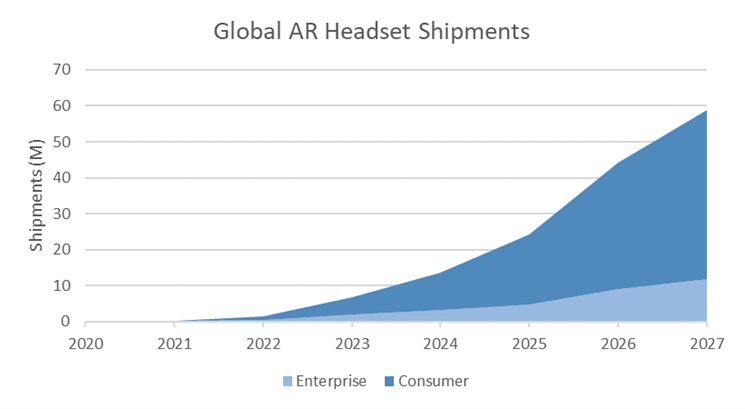
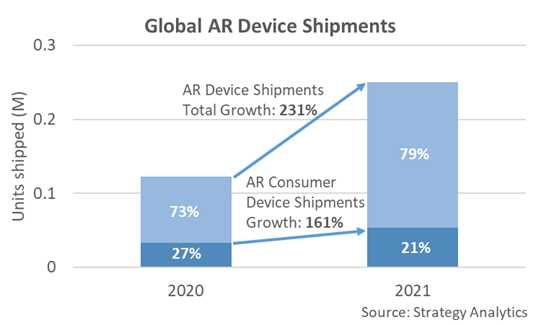
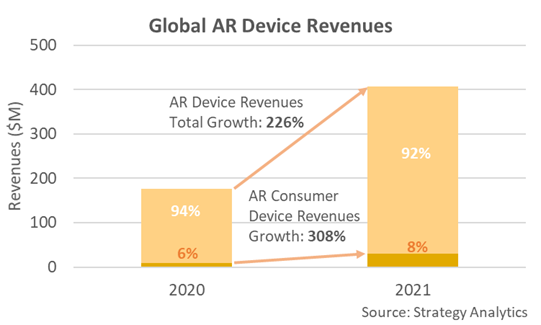
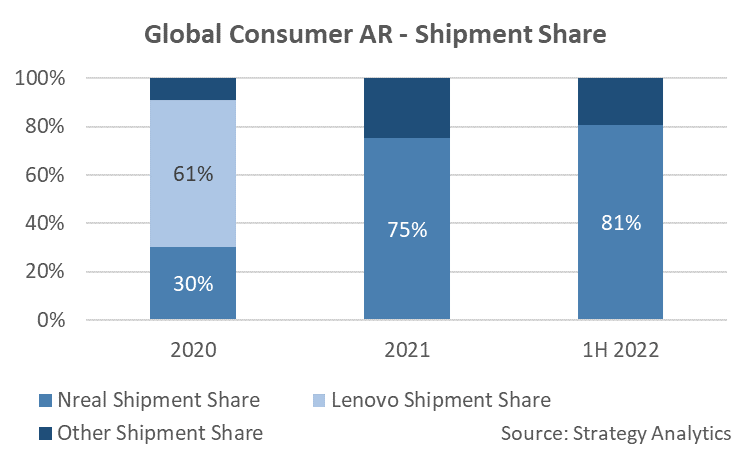

Stellantis NV reportedly plans to retrofit a factory in Mexico to build hybrid and electric vehicles as it transforms its lineup to meet growing demand for battery-powered transportation. The owner of the Jeep, Peugeot and Ram brands plans to retool its plant in Saltillo, Coahuila, one of northern Mexico’s industrial hubs about 200 miles from the Texas border. The company is also evaluating the possibility of investing instead in the state of Mexico, where it also has a plant in the city of Toluca, or in the state of Sonora, although Saltillo is the favorite in terms of potential sites. , said one of the people. The investment would be in the multi-billion dollar range and would occur over the next few years. (CN Beta, Bloomberg)
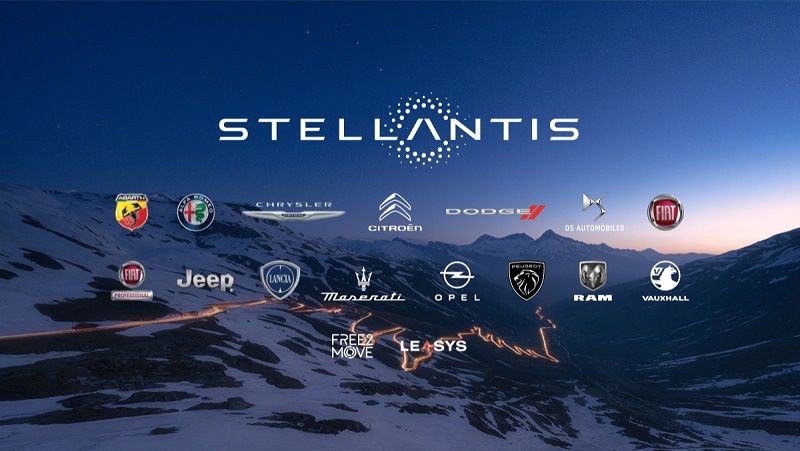

CleanRobotics’ flagship trashbot system uses on-board machine learning and robotic systems to sort materials from a single disposal point. It claims the machines are able to do so with roughly 90% accuracy — not perfect, but certainly better that what humans generally do. Given the on-board AI/ML, the trash sorting robot is, naturally, gathering data to help improve the sorting process. The recycling bin also generates high-quality data for waste audits, triggers fullness alerts, and features a large display for video content. And thanks to cloud connectivity, TrashBot fleet only gets smarter over time.(CN Beta, TechCrunch, TechTop)
